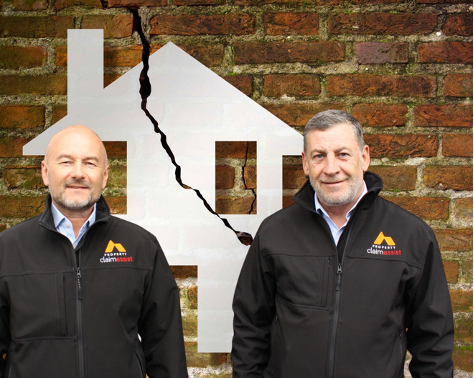Award-winning loss assessor, Property Claim Assist, is warning homeowners and commercial property owners across London, the south and the Midlands, to watch out for signs of property subsidence, following the summer drought.
After the driest first half of a year since the 1970s, and the driest July since 1935, Property Claim Assist says the groundwork for property subsidence has been done and all property owners should be looking out for signals that their home or premises are suffering.
During hot weather, soil loses moisture, whilst trees close to properties draw more water out of their root systems, which may lay beneath foundations. The soil can then shrink, leading the property to move. Once wet weather arrives, soil is replenished with water and swells, enabling the property to move position again but causing more damage.
Often, one part of a building will move whilst the rest stays in place, putting the walls under great pressure, in misalignment and in a position to crack. Whilst hot weather is often a cause of subsidence, there are others, such as the collapse of old mining works, nearby construction, leaking drains, oil spillage and the impacts of groundwater flooding.
Many modern properties can cope with normal moisture change, due to the depth of their foundations, but in extreme heat even they could suffer. A large deciduous tree can take more than 50,000 litres of water from the soil each year and, when there is a drought, remove moisture from a depth as low as six metres under a property.[1]
Property Claim Assist is urging property owners to look out for cracks more than 3mm wide and thicker than a 10-pence coin, near doors and windows, or where an extension joins a main building.
They should also look for cracks inside, matched by a similar crack in the same position externally. Diagonal cracks, wider at the top than at the bottom, should also be investigated.
Other potential signs are wrinkling wallpaper in the top corners of a room, close to the ceiling, when there is no dampness to be detected and doors and windows that suddenly stick.
A subsidence property insurance claim is typically complex, lengthy and impossible for a homeowner to negotiate alone, as recognised by the Financial Ombudsman, which says most of us lack “expertise” in this area. Property Claim Assist, as expert loss assessors, handle such claims on behalf of clients in conjunction with expert surveyors and engineers, who offer independent assessments of the process required to restore the property to long-term health.
Having expert assistance from your own loss assessor is almost a must for such claims. Insurers are reticent to pick up what can be significant sums for subsidence claims and case studies handled by the Insurance Ombudsman show they can try not to pay out, by declaring the subsidence historical, or declaring that stabilisation is not covered by the policy.
Other case studies have involved insurers not rectifying the issue in a way that would provide a long-term solution and merely providing a temporary patch-up.[2] Sometimes insurers attempt to cap the amount of payout they will provide, which is again not a valid action.
“Insurance Ombudsman complaints about insurers, when it comes to subsidence claims, often relate to their settlement offer being nowhere near enough to do more than provide a remedial solution, rather than a long-term, permanent one,” says Property Claim Assist’s Gary Rogers.
“Other complaints stem from insurers not offering alternative accommodation to the policyholder, not communicating sufficiently with the homeowner and sometimes making an outright refusal to pay the claim.”
Having your own independent loss assessor, to steer you through this process and get the claim settled correctly at the time the process is happening, is far more advantageous than trying to gain retrospective compensation via the Ombudsman. That process that can take a significant amount of time, even if you prove successful.
“Insurers are businesses and they and their representatives, called loss adjusters, will seek to ‘adjust’ the claim to save money wherever possible,” says Property Claim Assist’s Simon Colburn.
“With the huge sums involved, it is almost inevitable they will seek to do that with subsidence. Homeowners should appoint their own representative – a loss assessor – and let them not only ensure the settlement is fair but also take on the whole strain of negotiating the lengthy claim, commissioning the right experts, arranging alternative accommodation and project-managing the long repairs process.”
Whilst all this may seem daunting, anyone who has suffered subsidence damage, and who needs the service provided by Property Claim Assist, can access it for free, if its specialists carry out the repairs process. This ensures things are done right, putting a property back together again and restoring its health fully, if it decided to go on the move.




